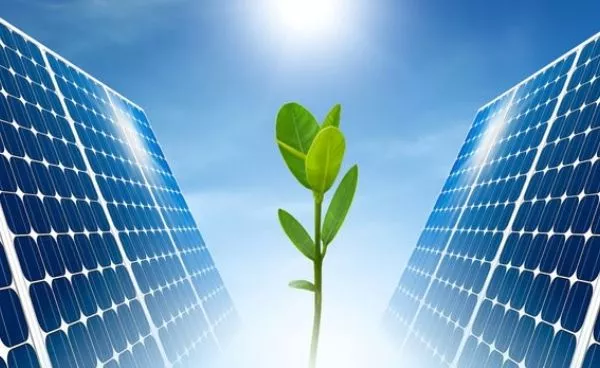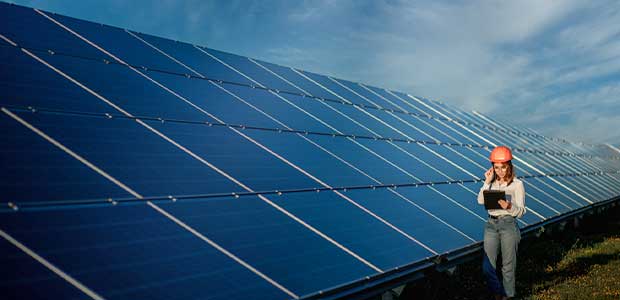Cut Down Energy Bills with Simply Solar Illinois – Learn About Your Choices
Cut Down Energy Bills with Simply Solar Illinois – Learn About Your Choices
Blog Article
Solar Power 101: A Newbie's Overview to Sustainable Energy Solutions
As the globe progressively changes towards sustainable power solutions, comprehending the principles of solar power becomes crucial for both individuals and services. By discovering the advantages of solar innovation, along with the economic motivations and setup procedures, one can acquire a more clear viewpoint on just how to effectively incorporate this renewable resource into their power strategy.
Comprehending Solar Power
At its core, comprehending solar power entails understanding the essential concepts of just how sunshine can be converted into usable electrical energy. Solar energy is stemmed from the sunlight's radiation, which can be used through various innovations. The main device for this conversion is the photovoltaic result. This sensation happens when sunshine strikes semiconductor products, commonly silicon-based, within solar batteries. The energy from the sunlight excites electrons in the semiconductor, allowing them to move openly and create straight existing (DC) electricity.

Comprehending solar power likewise includes acknowledging its ecological benefits. By utilizing sunlight, we can mitigate greenhouse gas emissions and reduce air pollution, contributing to a much more sustainable future. The innovations in technology and performance of solar systems remain to boost their stability, making solar power an increasingly attractive choice for global power requirements.
Kinds Of Solar Energy Equipments
Numerous kinds of solar energy systems are frequently used to harness solar power for electrical energy generation. The primary classifications consist of solar (PV) systems, focusing solar power (CSP) systems, and solar thermal systems.
Photovoltaic or pv systems use solar panels made up of silicon cells that transform sunshine directly right into electrical power. These systems are flexible and can be set up on roofs, ground mounts, or incorporated into structure products.
Concentrating Solar Power systems, on the various other hand, employ mirrors or lenses to focus sunshine onto a tiny area, producing heat that drives a vapor turbine to produce power - Simply Solar Illinois. CSP systems are generally deployed in large-scale power plants and call for direct sunshine, making them less suitable for over cast regions

Each kind of solar energy system has its one-of-a-kind qualities, applications, and viability depending upon geographic place, power requirements, and budget plan, making it necessary to review options based on details circumstances. - Simply Solar Illinois

Benefits of Solar Power
Utilizing solar power through different systems not only offers a sustainable way to create electrical energy but also uses a wide variety of benefits. One of one more info here of the most substantial advantages is the reduction in greenhouse gas exhausts, adding to a cleaner environment and combating environment change. Solar energy is sustainable, meaning it is limitless and available as long as the sun radiates, unlike nonrenewable fuel sources, which are finite and depleting.
Furthermore, solar energy can lead to significant expense savings over advice time. Home owners and services can minimize their electricity bills dramatically, and in a lot of cases, they may gain credit ratings for excess power created via net metering. In addition, the solar market develops work, from manufacturing to installation, boosting local economic climates.
Another compelling advantage is energy self-reliance. By creating their own electrical energy, individuals and communities can minimize dependence on exterior power resources, boosting strength against varying power prices and supply interruptions. Furthermore, solar power systems require minimal upkeep, making them a convenient option for sustainable energy generation.
Setup Refine Summary
The installation process for solar power systems generally involves a number of key actions that ensure efficient assimilation into a property. An extensive site assessment is performed to evaluate the roof covering's alignment, shading, pop over to this site and structural honesty, which are important to optimizing solar panel performance. Following this evaluation, the style stage begins, where a tailored solar energy system is set up based on the house owner's power demands and preferences.
As soon as the layout is settled, the necessary permits and approvals are acquired from regional authorities, guaranteeing compliance with laws. The actual setup involves installing the solar panels on the roofing system or ground, linking them to an inverter, and integrating the system with the residential or commercial property's electric setup. This phase may likewise involve mounting battery storage systems, depending on the layout.
After installment, a complete assessment is conducted to verify the system's capability and safety. The system is commissioned, and home owners are informed on its operation and maintenance. With the installment total, the solar power system can start creating sustainable energy, contributing to sustainability and decreasing utility costs. This structured technique makes certain that solar systems are both reliable and dependable, optimizing their long-term benefits.
Financial Incentives and Cost Savings
Exploring the monetary motivations and savings related to solar power systems can dramatically boost the allure of making the switch to sustainable power. Various rewards exist at federal, state, and regional levels, designed to lower the initial expenses connected with solar installation. Among one of the most significant rewards is the federal solar tax obligation credit rating, which enables homeowners to deduct a percentage of their planetary system installment costs from their government taxes. As of 2023, this debt stands at 30%, offering considerable savings.
Along with tax obligation credit histories, lots of states provide refunds that can additionally lower ahead of time costs. Some utility business additionally supply performance-based rewards, gratifying solar power production over time. Financing alternatives, such as solar financings and leases, enable customers to mount systems with little to no deposit, making solar power much more available.

Lasting cost savings are an additional essential aspect. By creating their very own power, property owners can dramatically decrease or perhaps eliminate their regular monthly energy bills. In addition, planetary systems can enhance home worths, giving a solid roi. In general, the mix of rewards and financial savings makes solar power a financially appealing selection for numerous homes.
Final Thought
In conclusion, solar power stands for an important component of lasting energy remedies, supplying a pathway toward minimized carbon impacts and improved environmental security. Ultimately, the change to solar energy not just promotes ecological duty however additionally promotes financial savings and power independence.
Report this page